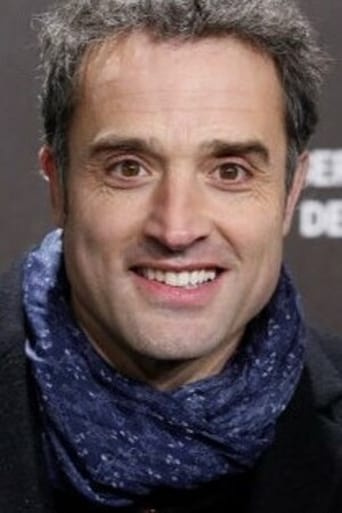Mabel Munoz
Just intense enough to provide a much-needed diversion, just lightweight enough to make you forget about it soon after it’s over. It’s not exactly “good,” per se, but it does what it sets out to do in terms of putting us on edge, which makes it … successful?
Keith F. Hatcher
The Spanish State Television Network (RTVE) has narrowed down the compass of its possibilities in recent years, such that, whilst one series coupling Imanol Arias and Ana Duato is still making its weekly trot across the screen (`Cuéntame' qv), this biographical `grand series' in one chapter of just over three hours (plus endless advertising) suddenly popped up with the same happy couple as the main actors. I do not wish to be unkind, but after a few dozen episodes of `Brigada Central' and some rather unfortunate productions such as `Lute' and the disastrous `Territorio Comanche', one does tend to get a bit tired of Imanol Arias. Albeit admitting that in `Bearn' (1983) or `Tiempo de Silencio' (1986) he played fairly good parts in films of very acceptable level. On the other hand, Ana Duato has blessed our little screens with lightweight TV series, such as `Celia' and `Médico de Familia' – entirely forgettable if you are older than about 14 – and has only appeared in Pilar Miro's `El Perro del Hortelano' as an offering of something more serious.From such backgrounds, it was, obviously, but a short step to the making of this biographical film on the life of the scientist Severo Ochoa (1905 Luarca, Asturias, Spain), one of many intellectuals who had to flee Spain during and following the Civil War. Although obviously much effort was made into producing this documentary film, it never managed to get beyond being merely a historical retrospective as it followed the man's life from his childhood in Asturias, university life in Madrid, and the investigations he carried out in Heidelberg, Glasgow, New York, and finally receiving the Nobel Prize. Great care was taken in building sets which looked like Madrid 1930 or the interiors of his various laboratories, and it was great to see some excellent period-piece automobiles. Some nice views across the water – I could not tell whether from Hoboken/Jersey City or whether from Brooklyn Heights – with the WTC towers visible: however they did not exist in 1959, and unfortunately do not exist today. I suppose we should consider this as only a very minor fault.However, as for the historical background, you would do better looking it up in Hugh Thomas' definitive `The Spanish Civil War', and specifically pages 554 et.seq (in my edition of Penguin, London) for a far better idea of Negrín, university professor who turned politician at the time.Over three hours long this film for TV will undoubtedly be a bit tedious, except for those with a specific great interest in the subject matter.





